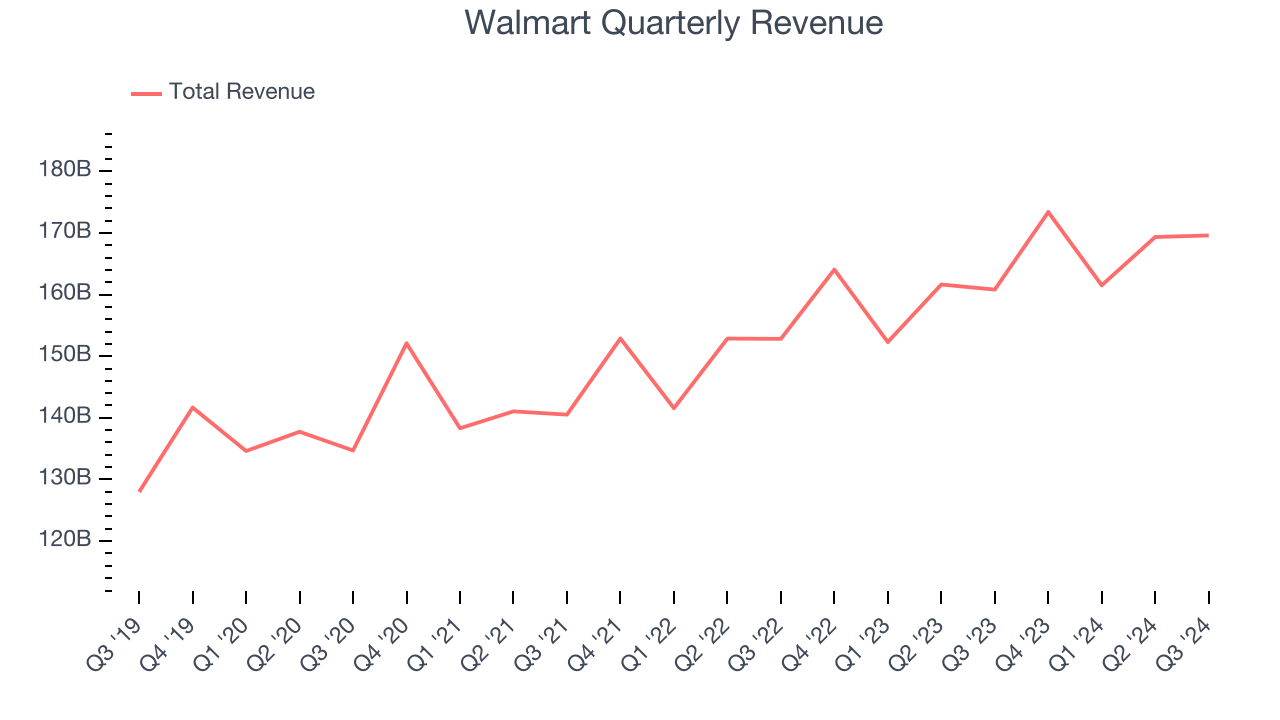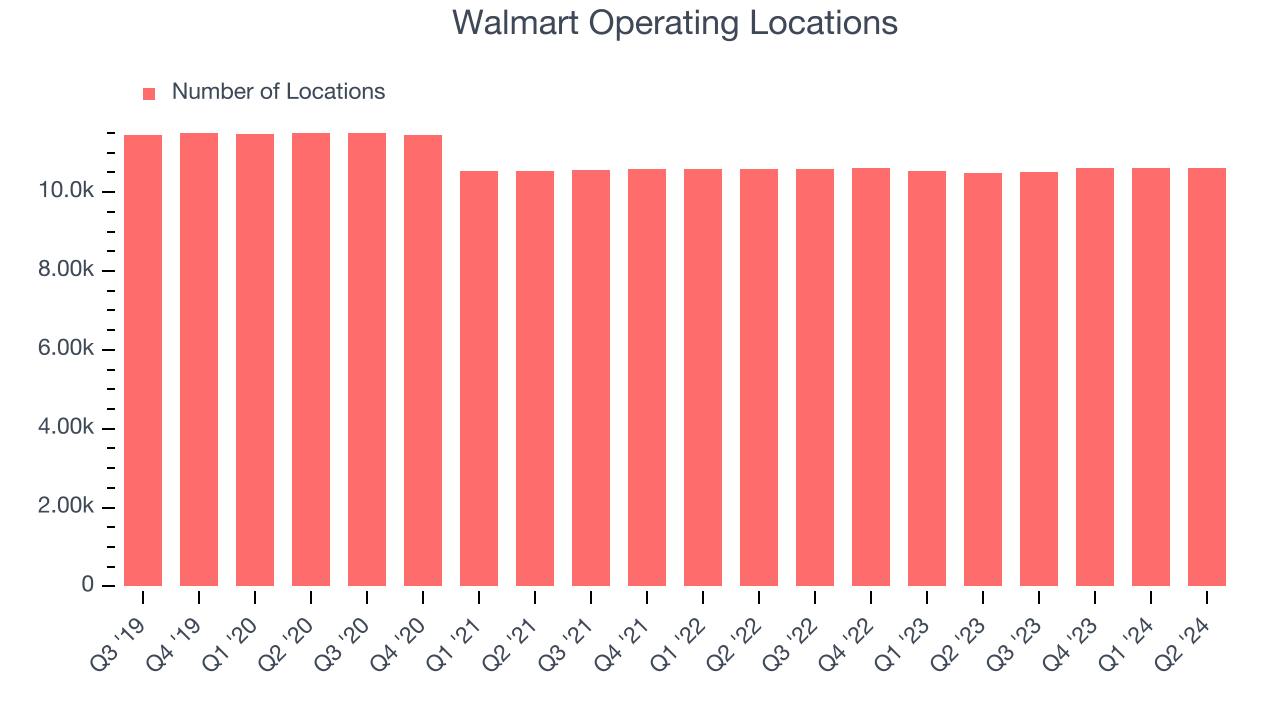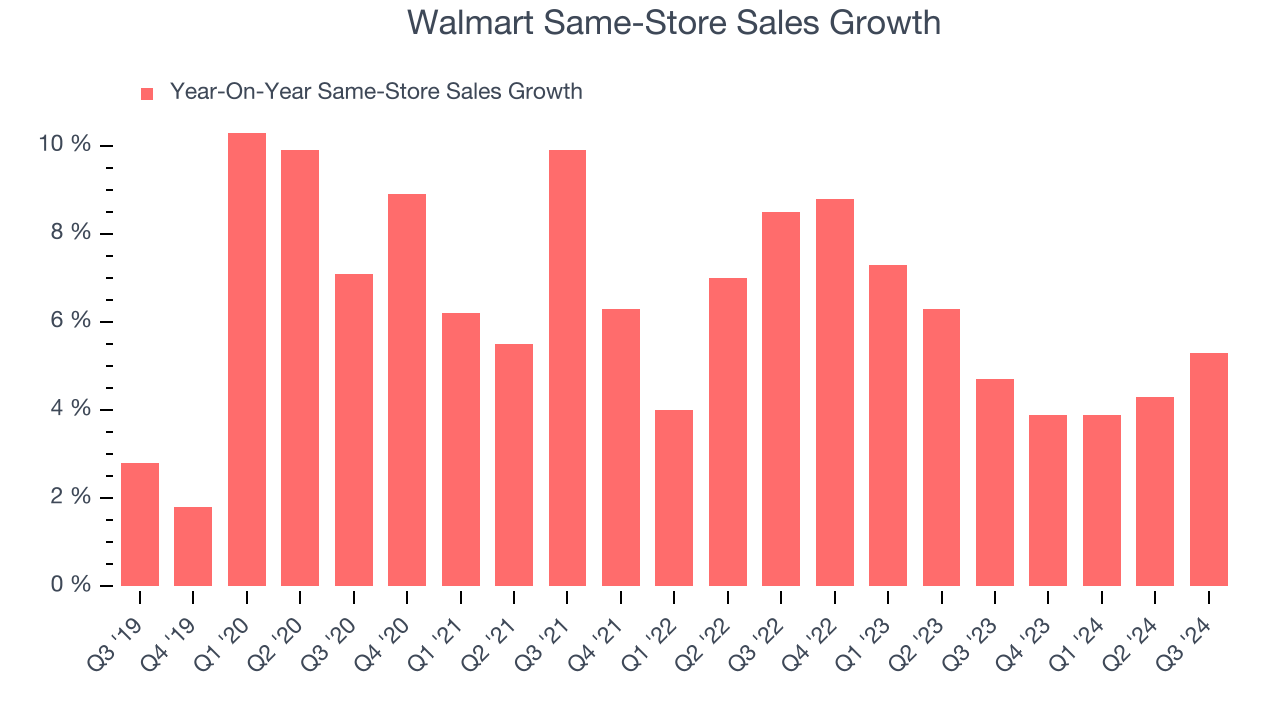
Retail behemoth Walmart (NYSE:WMT) beat Wall Street’s revenue expectations in Q3 CY2024, with sales up 5.5% year on year to $169.6 billion. Its non-GAAP profit of $0.58 per share was 8.8% above analysts’ consensus estimates.
Is now the time to buy Walmart? Find out by accessing our full research report, it’s free.
Walmart (WMT) Q3 CY2024 Highlights:
- Revenue: $169.6 billion vs analyst estimates of $166.6 billion (5.5% year-on-year growth, 1.8% beat)
- Adjusted EPS: $0.58 vs analyst estimates of $0.53 (8.8% beat)
- Adjusted EBITDA: $16.31 billion vs analyst estimates of $9.81 billion (66.2% beat)
- Management raised its full-year Revenue growth guidance to 4.95%% at the midpoint from 4.25% previously
- Management raised its full-year Adjusted EPS guidance to $2.45 at the midpoint, a 2.3% increase
- Gross Margin (GAAP): 24.9%, in line with the same quarter last year
- Operating Margin: 4%, in line with the same quarter last year
- Adjusted EBITDA Margin: 9.6%, up from 5.7% in the same quarter last year
- Free Cash Flow was $372 million, up from -$4.65 billion in the same quarter last year
- Same-Store Sales rose 5.3% year on year, in line with the same quarter last year
- Market Capitalization: $675.9 billion
Company Overview
Known for its large-format Supercenters, Walmart (NYSE:WMT) is a retail pioneer that serves a budget-conscious consumer who is looking for a wide range of products under one roof.
Large-format Grocery & General Merchandise Retailer
Big-box retailers operate large stores that sell groceries and general merchandise at highly competitive prices. Because of their scale and resulting purchasing power, these big-box retailers–with annual sales in the tens to hundreds of billions of dollars–are able to get attractive volume discounts and sell at often the lowest prices. While e-commerce is a threat, these retailers have been able to weather the storm by either providing a unique in-store shopping experience or by reinvesting their hefty profits into omnichannel investments.
Sales Growth
A company’s long-term performance is an indicator of its overall quality. While any business can experience short-term success, top-performing ones enjoy sustained growth for multiple years.
Walmart is a behemoth in the consumer retail sector and benefits from economies of scale, giving it an edge in distribution and the flexibility to offer lower prices. However, its scale is a double-edged sword because there are only a finite number of places to build new stores, making it harder to find incremental growth.
As you can see below, Walmart’s sales grew at a tepid 5.3% compounded annual growth rate over the last five years (we compare to 2019 to normalize for COVID-19 impacts) as its store footprint remained unchanged.

This quarter, Walmart reported year-on-year revenue growth of 5.5%, and its $169.6 billion of revenue exceeded Wall Street’s estimates by 1.8%.
Looking ahead, sell-side analysts expect revenue to grow 2.9% over the next 12 months, a slight deceleration versus the last five years. This projection doesn't excite us and implies its products will see some demand headwinds.
When a company has more cash than it knows what to do with, buying back its own shares can make a lot of sense–as long as the price is right. Luckily, we’ve found one, a low-priced stock that is gushing free cash flow AND buying back shares. Click here to claim your Special Free Report on a fallen angel growth story that is already recovering from a setback.
Store Performance
Number of Stores
A retailer’s store count influences how much it can sell and how quickly revenue can grow.
Walmart has kept its store count flat over the last two years while other consumer retail businesses have opted for growth.
When a retailer keeps its store footprint steady, it usually means demand is stable and it’s focusing on operational efficiency to increase profitability.
Note that Walmart reports its store count intermittently, so some data points are missing in the chart below.

Same-Store Sales
A company's store base only paints one part of the picture. When demand is high, it makes sense to open more. But when demand is low, it’s prudent to close some locations and use the money in other ways. Same-store sales gives us insight into this topic because it measures organic growth for a retailer's e-commerce platform and brick-and-mortar shops that have existed for at least a year.
Walmart has been one of the most successful retailers over the last two years thanks to skyrocketing demand within its existing locations. On average, the company has posted exceptional year-on-year same-store sales growth of 5.6%. Given its flat store base over the same period, this performance stems from not only increased foot traffic at existing locations but also higher e-commerce sales as demand shifts from in-store to online.

In the latest quarter, Walmart’s same-store sales rose 5.3% year on year. This performance was more or less in line with its historical levels.
Key Takeaways from Walmart’s Q3 Results
We were impressed by how significantly Walmart blew past analysts’ EPS expectations this quarter, driven by strong same-store sales growth. We were also impressed that the retailed raised its full year outlook for sales and operating profit growth as well as for EPS. Overall, we think this was a solid quarter with some key areas of upside. The stock traded up 3.9% to $87.40 immediately following the results.
Walmart had an encouraging quarter, but one earnings result doesn’t necessarily make the stock a buy. Let’s see if this is a good investment. We think that the latest quarter is only one piece of the longer-term business quality puzzle. Quality, when combined with valuation, can help determine if the stock is a buy. We cover that in our actionable full research report which you can read here, it’s free.

